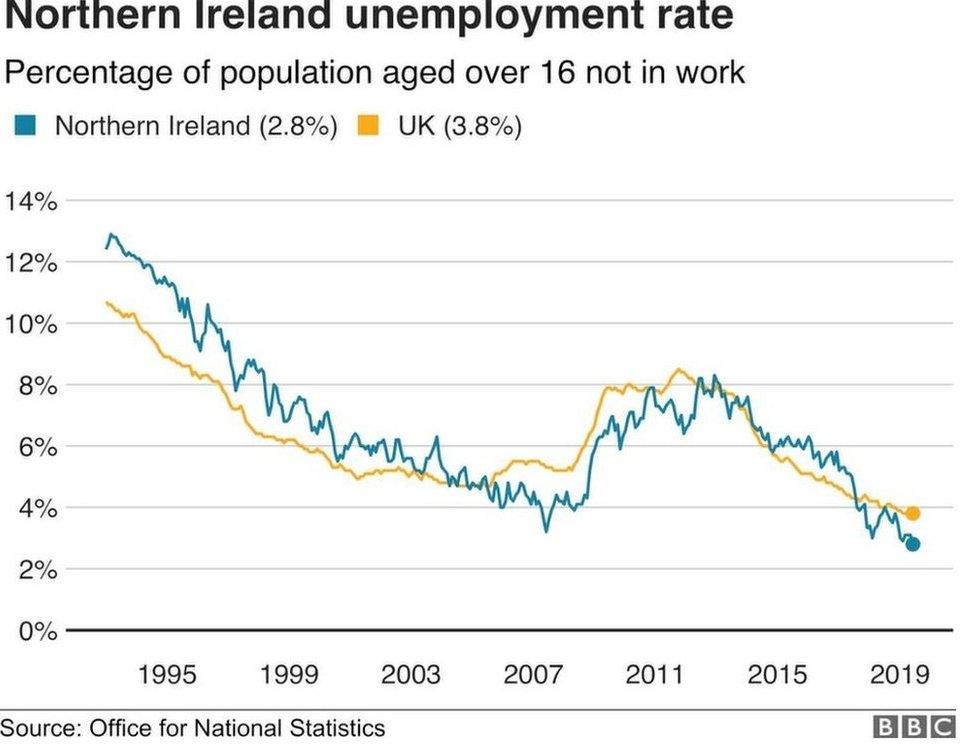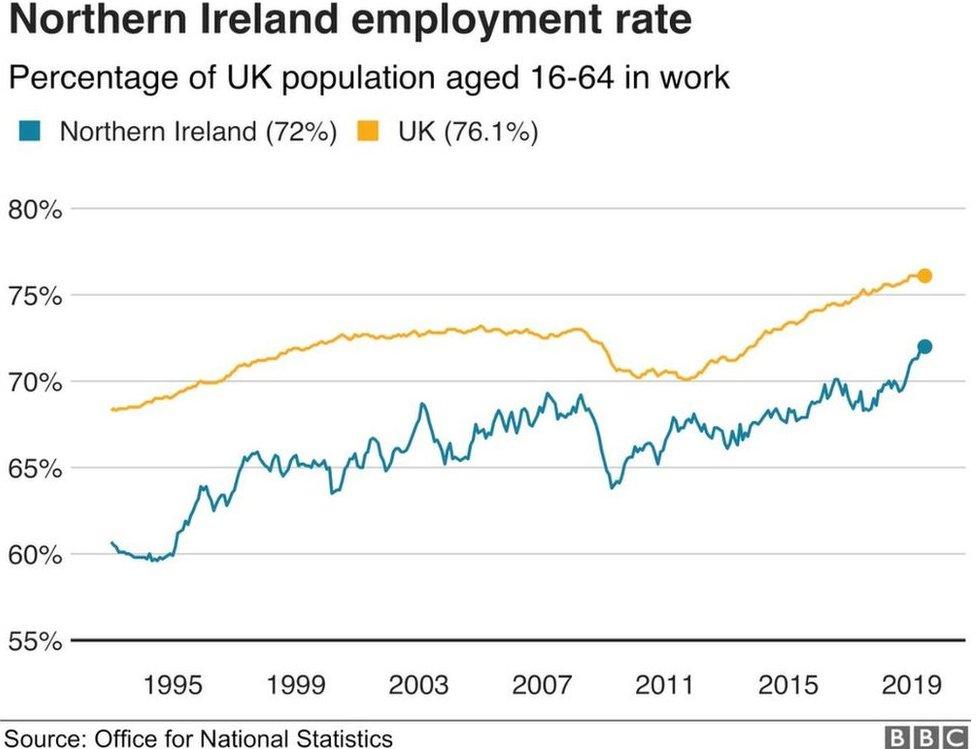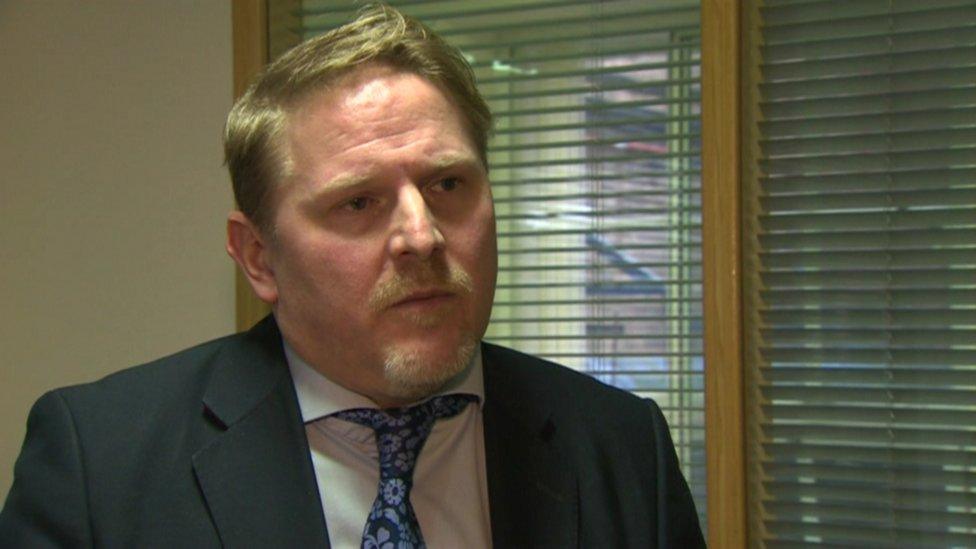Northern Ireland unemployment hits another record low
- Published

Northern Ireland's economic inactivity rate is also continuing to show improvement
The Northern Ireland unemployment rate has hit another record low.
In the three months between May and July 2019 it was just 2.8% compared to to a UK rate of 3.8%.
Meanwhile, the employment rate was recorded as 72%, which is the second highest on record.
This is a measurement of the percentage of working-age adults who are in employment and compares to the recession when the employment rate in Northern Ireland dropped to 64%.
The UK employment rate is 76.1% - its joint highest on record.
Northern Ireland's economic inactivity rate is also continuing to show improvement.

Economic inactivity is a measurement of those people who are not in work and not looking for work - that includes students, retired people and sick or disabled people.
Northern Ireland has an inactivity rate that is significantly and persistently higher than the UK rate.
The latest figures show the inactivity rate has fallen by 1.3 percentage points during the year to 25.8% - which is one of the lowest rates on record.

However it is still the highest of the 12 UK regions.
The Northern Ireland Statistics Agency (Nisra) says the strong job market has had a notable impact on inactivity and long-term unemployment.
"The number of people aged 16 and over who have been unemployed for one year or more is approximately half the level estimated this time last year, while the number of economically inactive has decreased by 15,000," said a Nisra spokesman.
"The continued improvements in the Northern Ireland labour market are consistent with the UK experience.
"It is worth noting, while the Northern Ireland unemployment rate is the joint second lowest of all the UK regions, NI has the second lowest employment rate and highest inactivity rate."
Recession warning
Meanwhile, professional services firm EY has cut expectations for economic growth next year in Northern Ireland and warned a no-deal Brexit scenario would push the local economy into recession.

Prof Neil Gibson admitted some of EY's "gloomier predictions" about NI jobs had been proven wrong so far
Its forecast has been revised down from 1.2% to 1.1% growth next year, based on the assumption of an "orderly" Brexit.
But in a no-deal scenario, it suggests the Northern Ireland economy would contract by 0.6%.
EY also said a no-deal Brexit would result in 60,300 fewer jobs across the island by 2022; 41,500 fewer in the Republic of Ireland and 18,800 fewer in Northern Ireland.
Prof Neil Gibson, chief economist at EY Ireland said: "A no-deal Brexit has the potential to push Northern Ireland into recession and to lead to a contraction in the labour market, which so far has consistently proven wrong some of our gloomier predictions.
"Although estimates of a no-deal impact vary considerably, they all suggest there will be a cost in the form of disruption across the island," he added.
The report said that in the event of a "difficult" Brexit, there would be jobs lost, but added these were unlikely to be in the locations or with the skills profiles that are in demand from employers for whom Brexit is not a major consideration.
- Published19 February 2019

- Published19 March 2019
